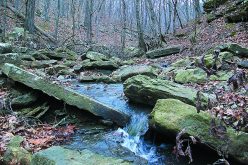
Courtesy Photo
Green Magic Homes are fast and easy to assemble, like a puzzle joining together with sealed parts.
Fans of Tolkien have probably dreamed of living inside a hobbit hole in the Shire.
As of this year, you can now live in a hobbit hole in the United States thanks to Green Magic Homes! The company operates worldwide and recently started selling these green homes in the U.S., with the first being built in Athens, Tenn., as a recycling facility office.
According to their website, GreenMagicHomes.com, “These elegant arched structures are made of fiber reinforced polymer modular components which are durable, flexible and waterproof. With endless design possibilities, these structures can be assembled quickly and easily, with minimal cost to create a gracious living environment in harmony with nature.”
Company designers are working on adding solar and wind technology and a rainwater harvesting component to give their homes off-grid electricity and water.
This new technology places the home partly within the earth but not underground, and the company claims its structures “are weather resistant, non-corrosive, 100 percent non-toxic, fire resistant, and produce no emissions.”

Courtesy Photo
Green Magic Homes are weather resistant, non-corrosive, 100 percent non-toxic, fire resistant, and produce no emissions.
The main green perks of these homes include a plastic structure that’s eighty percent recycled content but still long-lasting, a green roof (basically, covering the home with soil) that can become a native plant garden for pollinators or grow food crops for inhabitants, a very small footprint in terms of size, and avoidance of conventionally damaging home components like an asphalt shingle roof or extremely high energy bills. Soil on the roof is stabilized by root systems, with an underlying fabric layer covering the building.
Green Magic Homes work in almost any climate, including cold or desert environments. The temperature in the home is partly regulated by earth berms around the edges, giving them the appearance of a hill with doors and windows popping out. They’re fast and easy to assemble because it’s like a puzzle joining together with sealed parts.
Ducts, plumbing, ventilation, wiring and anything a conventional home offers can be part of these new homes but are not included in the purchase price. It’s roughly $42 per square foot, but the smallest home shell costs around $15,000 unless customized.
Unlike most sustainable homes such as cob, cordwood, straw bale, earthbag, and earth ship styles, this new home on the block is backed by a professional company of architects, engineers, manufacturers, contractors and distributors. You can put it together yourself or hire a crew, and instead of laboring for months in order to ram tires with earth or stomp cob, you can assemble a tiny house within a week. Think Legos, but vastly more complex.
As with any lifestyle decision, the choice of home can make a huge difference in the world. Not everyone can become hobbits and live in a Green Magic Home, but anyone can make a difference with their home to improve their own health and reduce our impact on the environment.
Amanda Bancroft is a writer, artist, and naturalist building an off-grid earthbag cottage for land conservation on Mt. Kessler. She and her husband Ryan blog about their adventures and offer a solar-hosted online educational center on how to make a difference with everyday choices at: www.RipplesBlog.org.










